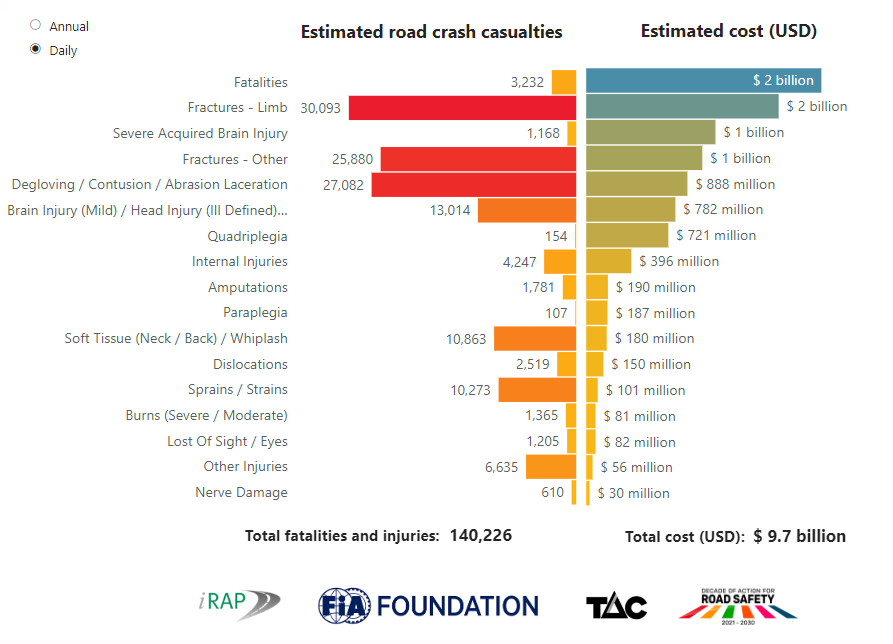
Almost 3,300 people are killed in road crashes every day. Road crashes are the leading cause of death for young people.
But this is just the tip of the iceberg. More than 130,000 people suffer injuries every day, including severe brain injury, quadriplegia, fractures, internal injuries and burns. Road crashes often result in life-long suffering and disability, and place a huge toll on families and communities.
Apart from the emotional impact of serious crashes, the cost of emergency response, trauma wards and long-term health care is immense. Transport Accident Commission (TAC) claim data shows that more than half of all costs occur more than two years after a crash, buried deep within health and social welfare systems.
We also know that the cost of road crashes are borne by victims and society differently around the world. For example, a road crash victim with a treatable injury in a country with advanced health and welfare systems is likely to receive the treatment they need to achieve a fast and full recovery. In a country with poor health and welfare systems, the same victim is less likely to achieve a fast, or even full, recovery. In the first case, the costs of the crash are experienced in a short period and borne mostly by health and welfare systems. While in the second case, the costs are extended over a long period of time and are often borne by the victim and their family, impacting both quality of life and economic opportunity for multiple generations.
However, there is a significant gap in evidence and data about road crash injuries and their costs worldwide. To help support debate about the right scale of response to this enormous level of trauma and cost, iRAP has drawn on data from the WHO, TAC, Institute for Health Metrics and Evaluation, and the International Monetary Fund (IMF) to make simple, high-level estimates of the types of injuries that we expect are occurring in every country around the world, and their costs.
The estimates shine a light on the enormous level of trauma that children, youth, adults and the elderly suffer every day and the break-down by sex. They serve as an inspiration to do more and invest more in our efforts to improve road safety.
You can explore the estimates of the level and trauma and cost for every country with the iRAP Safety Insights Explorer.
Global burden of road crashes
Estimated daily number and cost of road crash deaths and injuries worldwide
Methodology
The methodology used is described in the “About” section of the iRAP Safety Insights Explorer. iRAP is a registered charity and has utilised the resources available to it through the donor support of the FIA Foundation and TAC to undertake this fit-for-purpose study of the global cost of road trauma. We welcome the support of other partners interested in extending the analysis.


















